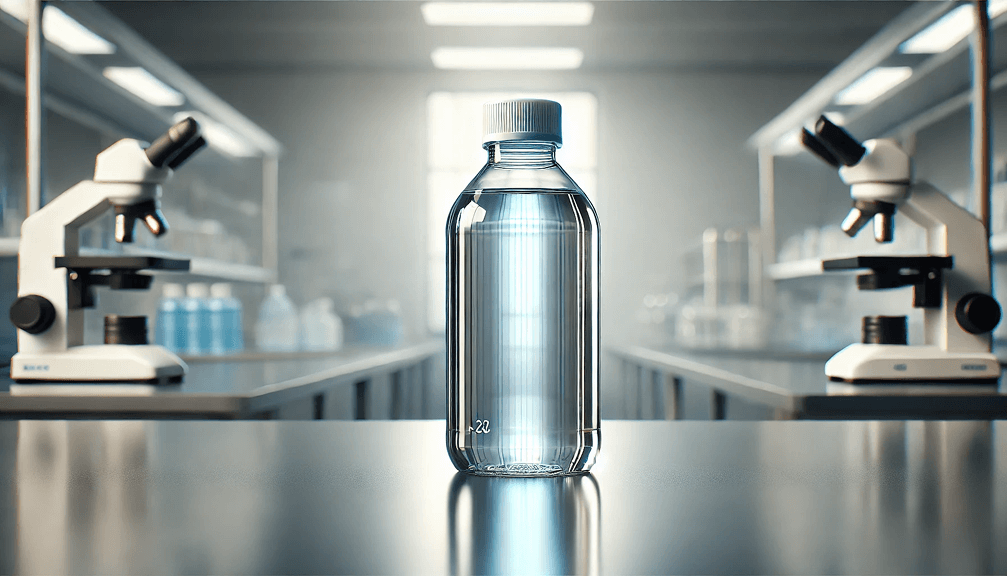Hydrogen peroxide, a widely used disinfectant and food processing agent, has been at the center of a major food safety crisis in 2024. The number of reported incidents involving hydrogen peroxide contamination surged dramatically, reaching an all-time high of 26 cases, as tracked by SGS Digicomply’s Food Safety Intelligence Hub. This sharp increase raised concerns over regulatory oversight, industrial handling practices, and potential health risks associated with its use.
As we enter 2025, the number of new incidents appears to be declining, with 7 cases reported so far. But is the worst truly behind us, or should the food industry remain on high alert? In this report, we analyze the root causes of the 2024 outbreak, the current situation, and the necessary steps to prevent future incidents.
.png?width=570&height=358&name=Reported%20Incidents%20of%20Hydrogen%20Peroxide%20Contamination%20in%20Food%20Products%20(2010-2025).png)
This insight has been timely identified and is available to users through the SGS Digicomply Food Safety Intelligence Hub. Feel free to explore the Food Safety Intelligence Hub demo and try this tool in action.
What is Hydrogen Peroxide?
Hydrogen peroxide (H₂O₂) is a chemical compound composed of hydrogen and oxygen, widely used for its antimicrobial and oxidative properties. It appears as a clear, colorless liquid and is commonly utilized in food processing, medical applications, disinfection, and industrial manufacturing.
Uses in the Food Industry
Hydrogen peroxide is frequently used as:
- A Disinfectant – It helps sanitize food contact surfaces, equipment, and packaging.
- A Bleaching Agent – Used to whiten certain food products, such as wheat flour, cheese, and edible oils.
- A Preservation Agent – Helps control microbial growth in dairy, seafood, and beverage production.
The 2024 Hydrogen Peroxide Outbreak: What Happened?
The use of hydrogen peroxide in the food industry is not inherently dangerous when handled correctly. However, a combination of misuse, regulatory gaps, and supply chain vulnerabilities contributed to the unprecedented rise in contamination cases in 2024. Several key trends emerged:
-
Supply Chain Contamination: Many incidents were linked to hydrogen peroxide used in food production, where improper concentration levels led to hazardous residues in consumer products.
-
Regulatory Weaknesses: Despite stringent regulations in some regions, enforcement inconsistencies allowed for lapses in compliance, particularly in manufacturing and food processing environments.
-
Mislabeling & Industrial Handling Errors: Some cases resulted from mislabeling, where food-grade hydrogen peroxide was mixed or stored with higher-concentration industrial chemicals, leading to accidental exposure.
-
Geographical Spread: The contamination was not isolated to a single region. Countries including Taiwan, the United States, Spain, Italy, and the United Kingdom were among the hardest hit.
Where Are We Now? Hydrogen Peroxide in 2025
Early 2025 data shows a significant decline in reported incidents—dropping from 26 cases in 2024 to just 7 cases so far this year. This could indicate improved regulatory responses, better industry awareness, or simply a natural resolution of the crisis. However, several key questions remain:
-
Is the decline sustainable, or will cases resurge later in the year?
-
Have regulatory agencies introduced effective new controls?
-
Are food manufacturers implementing more rigorous testing and monitoring protocols?
One thing is clear: While the numbers are down, hydrogen peroxide remains a risk factor. Without continued vigilance, another spike could occur.
Lessons Learned: How to Prevent Future Hydrogen Peroxide Contamination
The 2024 outbreak serves as a critical lesson for food safety professionals, regulatory bodies, and manufacturers. Moving forward, the industry must take the following steps:
-
Stronger Regulatory Oversight: Governments and food safety authorities must ensure strict enforcement of hydrogen peroxide usage guidelines, particularly in food processing.
-
Improved Supply Chain Transparency: Companies need greater traceability of hydrogen peroxide sources, ensuring that contamination risks are identified early.
-
Enhanced Industrial Training: Manufacturers should train personnel on correct handling and labeling to prevent mismanagement.
-
Routine Testing & Monitoring: Regular chemical residue testing should become standard practice for food and beverage companies using hydrogen peroxide.
-
Global Collaboration: Given the international nature of food supply chains, cross-border regulatory cooperation is essential to prevent future crises.
Conclusion: Is the Risk Over?
While the dramatic surge in hydrogen peroxide contamination cases in 2024 was alarming, the situation in 2025 appears more stable. The 7 reported cases so far suggest a downward trend, but this does not mean the industry can afford complacency.
Manufacturers, regulators, and food safety professionals must continue to prioritize transparency, compliance, and proactive monitoring to ensure that hydrogen peroxide contamination does not re-emerge as a serious public health threat. The lessons from 2024 should drive lasting improvements in food safety standards worldwide.
Stay informed with SGS Digicomply to track regulatory changes and food safety trends in real time.





.webp?width=1644&height=1254&name=Food%20Safety%20Dashboard%201%20(1).webp)
